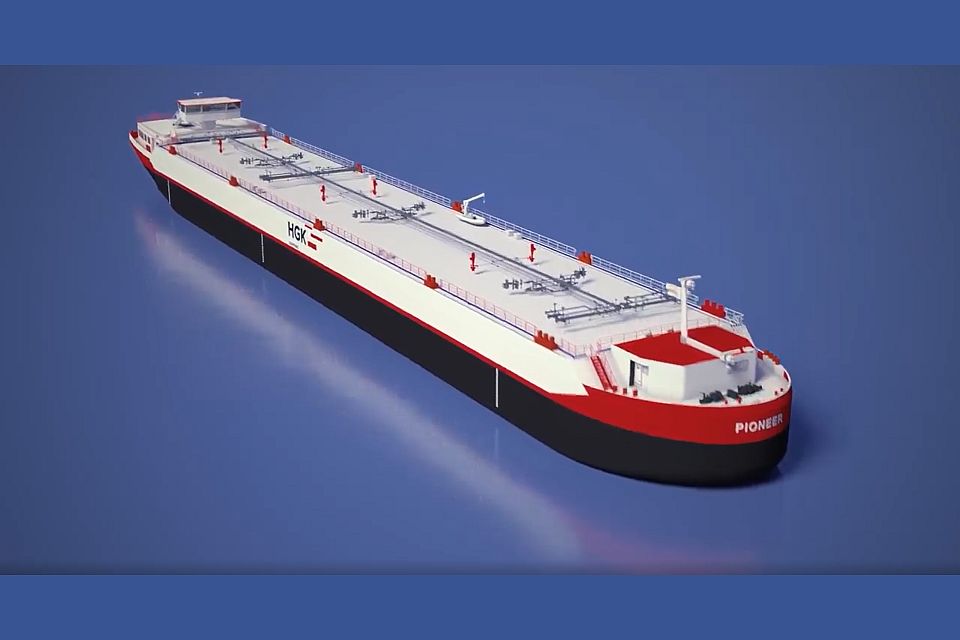HGK Shipping is introducing a groundbreaking inland waterway vessel design with the project name Pioneer. Equipped with innovative tank and loading systems, it will transport gases in liquefied forms, particularly cold liquefied ammonia (NH3) and liquefied carbon dioxide (LCO2).
With the planned construction of the vessel, HGK Shipping wants to set new standards for safely and efficiently transporting the important source of energy, ammonia, obtained from “green” hydrogen at a time when the future of energy supplies is being put into place. The concept also allows for the removal of unavoidable quantities of carbon dioxide.
Video by HGK Shipping.
‘Thanks to this innovative type of vessel, we’re already paving the way to meet the logistical requirements for sustainable inland waterway shipping,’ says Steffen Bauer, CEO of HGK Shipping. ‘It won’t be possible to simply transport all the predicted volumes of hydrogen and its derivates, such as ammonia, but also liquefied carbon dioxide, along pipelines. That’s why we’re offering the market efficient alternatives using inland waterway shipping as the mode of transport.’
Also read: SEAFAR to demonstrate remote-controlled inland navigation in Germany
Cold liquefied form
HGK Shipping’s concept focuses on the most important materials that will need to be transported for the energy revolution, both in terms of supplies and disposal. It is only possible at the moment to transport a gas such as ammonia on board an inland waterway vessel from the ports to destinations further inland if the gas has been liquefied under pressure. Thanks to the new project – and the technology is also designed for coastal vessels – this will take place in cold liquefied form, that is to say, at temperatures as low as minus 33 degrees Celsius.
This will also do away with elaborate handling processes at the ports, which have been associated with energy-intensive heat treatment in the past. This new type of vessel has been specially developed for traffic between the Amsterdam-Rotterdam-Antwerp (ARA) ports and destinations further up the river Rhine. The new vessel can accommodate significantly larger volumes than current gas tankers because it is 135 metres long and 17.5 metres wide.
Also read: GCMD plans to study offloading of shipboard captured CO2
Transporting carbon dioxide
The concept also paves the way for these new kinds of vessels to be able to remove the quantities of carbon dioxide, some of which are unavoidable, from industry’s production sites – in liquid form, that is, as LCO2. Using carbon capture and storage (CCS) methodology, handling and storage capacity is currently being created at factories and ports for the envisaged geological storage of carbon dioxide at suitable sites, including former oil storage depots and natural gas storage sites.
‘The innovative tank and loading system for this special type of vessel is the result of intense development work in cooperation with international partners in the world of marine shipping and at our own design centre,’ explains Tim Gödde, business unit director Ship Management at HGK Shipping. ‘The technical innovations, which we’ve already used for previous new vessels, such as a diesel-electric drive concept and the shallow-water design, will also be integrated in this new type of model.’
Picture: HGK Shipping drives the development of Europe’s first gas tanker for the transportation of cold liquefied ammonia and liquefied carbon dioxide in a groundbreaking pioneering project (by HGK Shipping).
Also read: ‘Ports are not ready to handle onboard captured carbon’








